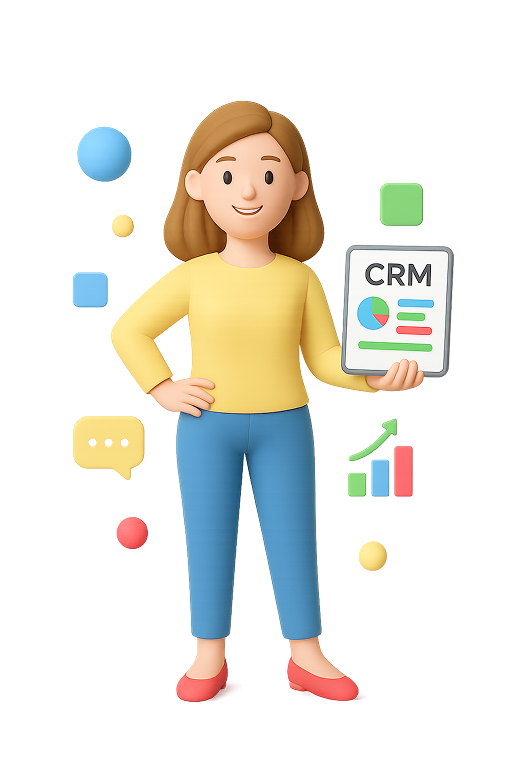In the AI-driven technological landscape of today, things do move fast, but privacy concerns escalate on a daily basis. Artificial intelligence systems face intense scrutiny over data management practices. Venice AI is an advanced AI solution that puts user privacy as a priority while ensuring robust AI capabilities. Launched in 2024 by an eminent cryptocurrency pioneer, Eric Voorhees, it has emerged as a complete solution. It showcases a paradigm shift in how users engage with AI technology.
Understanding Venice AI
Venice AI can be described as a privacy-focused and decentralized AI platform that ensures users get secure accessibility to image generation, text creation, and building capabilities. Contrary to conventional AI services that store user information on centralized services, it emerges as a creative solution. It adopts end-to-end encryption and decentralized infrastructure for computing to ascertain comprehensive privacy protection.
The platform differentiates itself through its ongoing diligence toward data sovereignty and user autonomy. Developed with the principles of blockchain technology and decentralized architecture, it provides users a private environment to interact with AI models without making their conversation history or personal data vulnerable. The platform ensures total encryption of data and local storage on individual devices. It promises that the data is not saved on the company’s servers.
Core Characteristics and Capabilities
Privacy Framework
The core essence of Venice AI exists in its advanced privacy architecture. The platform executes numerous important security measures, such as the following:
- Complete encryption for all generated content as well as user chats.
- Local storage of data makes sure that the data remains saved on the user’s device.
- Capabilities for anonymous interaction Make sure that users do not have to provide their personal details.
- The platform adopts a zero-knowledge protocol that ensures no third party can gain access to user prompts.
Adopting this architecture allows the platforms to resolve increasing concerns related to AI platforms. Essentially, all prominent AI platforms leverage customer information for training processes; some even share the data with third parties. Users ensure comprehensive control over their digital interactions while also gaining accessibility to sophisticated AI capabilities at the same time.
Existing AI Models
The platform ensures accessibility to numerous innovative open-source models, each one streamlined for particular tasks:
- DeepSeek R1 671B for analytical processes and complex reasoning.
- Llama 3.1 405B for general interactions with AI models.
- FLUX Custom for tailored generation of images
- Stable Diffusion 3.5 Large for professional-grade creation of visual content.
- Qwen 2.5 VL 72B for interpretation of visuals.
- Dolphin 72B for sophisticated processing of natural languages.
Such models work through the decentralized infrastructure of the platform. This makes sure that performance levels always remain consistent, ensuring overall privacy standards. Users can transition between various models as per the particular needs without any impact on security.
Capabilities for Content Creation
Venice AI proves to be extremely capable in three primary areas of content creation:
- Generation of Text: The platform manages numerous content writing tasks such as technical documentation, creative content, academic research, and business communication. The advanced AI models create contextually aware responses while ensuring conversational flow across longer periods of interactions.
- Creation of Image: Capability to generate visual content covering technical diagrams, artistic illustrations, and conceptual design. The platform provides support to numerous customization options and artistic styles for professional-level outputs.
- Development of Code: The platform also provides expert programming assistance. This includes algorithm optimization, debugging support, documentation creation, and multilingual compatibility. Developers benefit a lot from smarter code recommendations and suggestions for automated testing.
Pricing Structure and Accessibility
Free Tier
This AI platform is considered more budget-friendly than the others because of its generous free plan. It is especially designed for casual users and users who want to test the platform before using it.
- Accessibility to base AI models for basic tasks.
- 25 free prompts/day for text generations.
- 15 free prompts/day for image generation.
- Standard resolution for all created images.
- Basic processing speeds.
This free plan serves a wide market spread across countries like Canada, the United States, Australia, and Europe who need AI-powered assistance without prior financial commitment. Though daily limits can prove to be a disadvantage, they reset automatically, which is ideal for users who have light usage patterns.
Pro Plan
Businesses and content creators who have much more complex content requirements can leverage the Pro plan that costs around $18/month.
- Unlimited creation of prompts across diverse content types.
- Accessibility to sophisticated AI models with higher performance levels.
- Customization characteristics and character generation.
- Capabilities for image upscaling in high resolution.
- Capability to remove watermarks from created images.
- Fast processing for much more rapid response times.
- API accessibility for smooth integration with third-party apps.
This paid subscription plan particularly appeals to developers, content creators, and businesses needing high-volume and consistent AI assistance without restriction on usage.

API Pricing
For custom integrations and enterprise deployments, Venice AI provides versatile API pricing structures. Organizations that can programmatically access the capabilities of the platform allow smooth integration with the present applications and workflows. The API provides support to webhook notifications, batch processing, and custom model configurations personalized to particular business needs. For more information on API pricing, visit the official website of the platform.
Developer Tools and Technical Execution
API Integration
The platform ensures complete AI documentation, allowing developers to integrate AI features into their apps. The main characteristics involve:
- RESTful API architecture for user-friendly execution.
- SDK availability for prominent programming languages.
- Webhook support for asynchronous processing
- Resource management through rate-limiting controls.
- Options for custom endpoint configuration.
Developers like the overall commitment of the platform toward API stability, as it also boosts its functionality. Consistent updates showcase new characteristics without breaking present integrations.
Security Layers
Apart from privacy protection, Venice AI deploys powerful security protocols:
- Multi-factor authentication for protection of account
- Encrypted data transmission via industry-relevant protocols.
- Consistent security audits carried out by third parties
- Adherence to global data protection regulations.
- Procedures for transparent incident reporting.
Such measures make sure that the platform is reliable while safeguarding itself and users against possible vulnerability or unauthorized user access.
Market Position and Competitive Analysis
In the growing artificial intelligence landscape, Venice AI takes center stage by emphasizing privacy over the collection of data. While popular platforms such as Claude, ChatGPT, and Gemini provide robust capabilities, they depend on intense training of AI models that further depend on user data storage.
The decentralized approach of the platforms proves to be beneficial for users who prioritize privacy. These can be businesses managing confidential information, journalists safeguarding their sources, researchers exploring controversial subjects, and individual users who emphasize digital autonomy. Thus, the platform appeals to users who avoided AI platforms previously because of privacy concerns.
What Are the Use Cases of Venice AI?
Professional Applications
Businesses utilize Venice AI for numerous professional use cases:
- Content Marketing: The platform can prove to be useful in creating social media content, blog posts, and marketing materials without making confidential data vulnerable.
- Research and Development: Researchers can also utilize the platform for creative concepts while securing their intellectual property.
- Customer Service: Creating response templates while ascertaining customer privacy.
- Legal Documentation: Creating agreements and contracts with assurance of confidentiality.
Creative Projects
Creators and artists can use the platform in the below-mentioned areas:
- Story Development: Creating story narratives in a private environment without any worries about data theft.
- Visual Design: Generating innovative artwork for business projects.
- Music Composition: Creating musical concepts and lyrics privately.
- Development of Games: Secure design of storylines and characters.
Educational Support
Educators and students can greatly benefit from the platform through:
- Assistance with Assignments: The platform can help with a variety of academic tasks.
- Language Learning: Learn languages and practice sentences in complete privacy.
- Proficiency Development: Technical training and programming tutorials.
- Curriculum Design: In educational institutes, the Venice AI can turn out to be an asset in confidentially generating educational materials.
Future Development and Roadmap
The platform evolves consistently with strategic enhancements, which include better processing speeds, expanded model selection, additional language support, and improved collaboration features. Development priorities resonate with user feedback, while core privacy principles keep them secure about their data.
More features in the future are likely to emphasize enhanced user experience through interface improvements, mobile app optimization, expansion of mobile capabilities, and incorporation with widely known productivity platforms. Such additions boost the position of the platform as a complete AI solution for users who remain conscious about their privacy in the evolving digital landscape.
Conclusion
Venice AI showcases a substantial shift in how AI platforms treat user data and privacy. It demonstrates that robust AI capabilities must not compromise the privacy of the user. Courtesy of its decentralized architecture, complete set of features, and dedicated sovereignty of data, the platform focuses on vital concerns regarding AI technology. For organizations and professionals emphasizing privacy without compromising on functionality, the platform proves to be a compelling choice.
FAQs For Venice AI
Q. Who founded Venice AI?
A- The platform was developed and launched by Eric Voorhees.
Q. Is Venice AI truly private?
A- Yes, all your interactions within the platform remain considerably private.
Q. Does Venice AI allow NSFW content?
A- It is a formidable choice among users who desire NSFW content because of its uncensored capabilities and advanced settings. However, despite its strong emphasis on user’s privacy, it adopts robust security policies and disallows illegal content.
Q. Is Venice AI free?
A-Yes, there is a free version of the platform that offers standard functionality. You can easily create images, text, or code without any charges.
Q. How to enable voice mode?
A- To easily voice mode, follow the below steps on the platform-
- From the Venice AI interface, choose the settings tab which you will find on the top right of your screen.
- Select “Text” and then go down to the Venice Voice.
- Then, allow “Read Responses” and then select your preferred voice settings.




%201.png)

%201.png)

%201.png)

